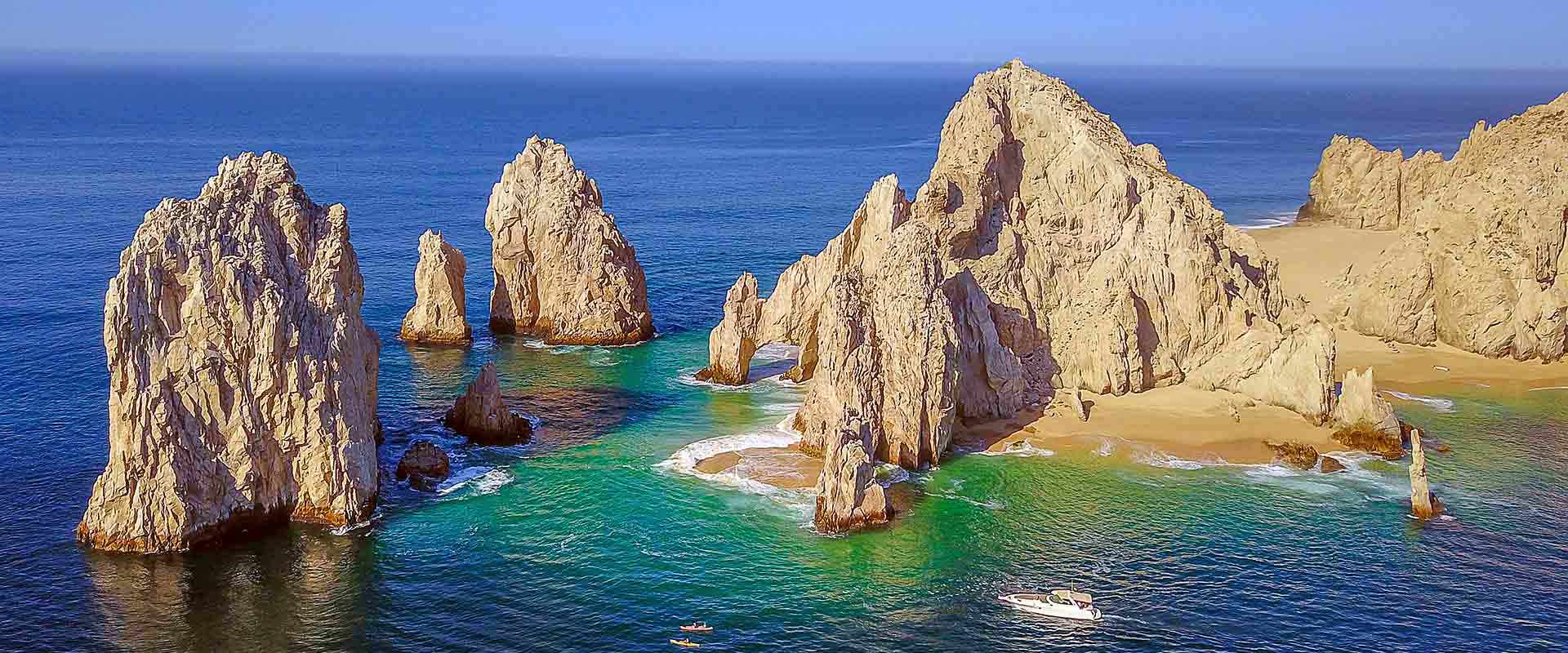Liveaboard Diving in Cabo San Lucas
What to Expect on a Cabo San Lucas Liveaboard
Liveaboards departing from Cabo San Lucas, commonly known as Cabo, usually set off towards the Socorro Islands or into the Sea of Cortez. Cabo is a popular tourist destination, providing visitors with sun, sand, sea, and diving, with white beaches and turquoise waters. There are numerous resorts and endless activities to enjoy the surroundings as much as possible, genuinely directed towards tourism. It is located in the southern tip of the state of Baja California, in Mexico, and it is one of the two locations liveaboards depart from to visit the surrounding dive sites. The dive sites surrounding Cabo San Lucas are world-renowned for the marine wildlife, numerous species of pelagics, large schools of fish, and endless photography options.
Liveaboard Diving from Cabo San Lucas
Mexican liveaboards currently depart from Cabo San Lucas port. There are year-round liveaboard trips of all shapes, styles, and durations to satisfy everyone's needs. Some liveaboards will head to the Socorro's, a group of four volcanic islands called the Revillagigedo Archipelago or the Socorro Islands. Due to these dive sites being around 400km (250 mi) from Cabo San Lucas, the liveaboards usually leave in the afternoon or the evening to start the first day of diving. Socorro Island, Roca Partida, San Benedicto, and Clarion are the four islands. This is a paradise for many large Pelagic species, including sharks such as whitetips, hammerheads, silky sharks, and Galapagos sharks. Humpback whales that migrate to and from Alaska and stop to breed are spotted here during the winter months. Pods of playful dolphins come up close and personal, and last but not least, Manta Rays. The Giant Pacific Manta Rays are the top attraction of this archipelago; they fly along with the divers through the crystal clear waters with wingspans up to 7m (22ft). They have gotten used to divers, are very curious, and will come very close to you for incredible photo opportunities. There are large schools of blackjacks, Clarion butterflyfish (the local butterflyfish of Clarion Island), grunts, and wahoos.
The visibility in this area varies from 15-50m (49-164ft), and water temperatures range from 21 degrees Celsius (70 degrees Fahrenheit) up to 28 degrees Celsius (82 degrees Fahrenheit). They are part of a protected biosphere reserve, and many conservation organizations are working around here to preserve the unique wildlife that lives and passes by here.
This archipelago of islands is a more advanced diving area as it is an open water dive area, and therefore, sometimes there are strong currents and big waves, and most dive spots are pretty deep; however, each liveaboard has its minimum dive experience level, most expect to have your Advanced Open water with at least 50 logged dives, but there are a few which only need you to have your Open Water and no minimum logged dives. Please keep this in mind.
Other liveaboard itineraries may offer cruises into the Sea Of Cortez, which provides excellent chances to dive with Sea Lions.
Getting to Cabo San Lucas
The Mexican liveaboards, which depart from here, will depart from Cabo San Lucas port. This port and this city are located in Baja California, the most Southern Los Cabos municipality. You will most likely fly into Los Cabos International Airport, which has flights from the United States, Canada, and other Mexican Cities.
Cabo San Lucas is located in the southern tip of the state Baja California in Mexico, and is a popular tourist destination, as it provides visitors with sun, sand, sea and diving; with white beaches and turquoise waters. The dive sites in the area are renowned for their stunning marine wildlife.
Cabo San Lucas Diving Reviews
- 8.6 Fabulous
- 9.2 Superb
- Gabriel A
United States
Limited visibility but sightings of hammerheads and mobula rays, as well as humpbacks on the surface.
Diving Cabo San Lucas in January on the Nautilus Explorer
- 6.0 Review score
- Lisa K
United States
Outside of this boat’s itinerary with local dive shop, Cabo San Lucas was terrible visibility but I saw about 20 mobula rays on the sandy bottom and a giant bait ball of sardines! This was actually more impressive than what we saw on the Liveaboard!
Diving Cabo San Lucas in January on the Nautilus Explorer
- 10.0 Exceptional
- Kathleen S
United States
Not so good this time of year, Feb, water cold and poor visibility
Diving Cabo San Lucas in February on the Nautilus Belle Amie
- 10.0 Exceptional
- Michael J
United States
Cabo diving itself is cold (67 degrees F) with low visibility (10ft) and can be very crowded/touristy. Saw some interesting macro life, but no big creatures.
Diving Cabo San Lucas in May on the Nautilus Belle Amie
- 7.6 Good
- Charles M
Switzerland
poor visibility, ie a bit desapointed.
Diving Cabo San Lucas in January on the Nautilus Explorer
- 8.8 Fabulous
- Magdalena B
Germany
Cold water, reduced visibility but rich marine life
Diving Cabo San Lucas in March on the Nautilus Belle Amie
- 8.0 Very good
- Jose Manuel U
Mexico
Cold water!! It is not a great spot to dive
Diving Cabo San Lucas in February on the Nautilus Belle Amie
- 8.8 Fabulous
- Carlotta B
Italy
Nice, rich in marine life, but cold
Diving Cabo San Lucas in May on the Nautilus Belle Amie
- 8.8 Fabulous
- Guillermo S
Uruguay
Buena visibilidad, nada comparado con el buceo en el archipielago.
Diving Cabo San Lucas in December on the Nautilus Belle Amie
- 6.8 Review score
- eric B
France
Visibilité souvent très mauvaise, pas d'intérêt, a plongé sur Cabo san lucas pour nous. Le club médiocre en plus.
Diving Cabo San Lucas in June on the Nautilus Belle Amie











